By Leslie Nemo
After nine years of looming in the background of every family picture taken at the Minnesota Zoo, the steel remains of the zoo’s monorail system are getting a new life. The state-supported institution has announced plans to build a 1.25 mi pedestrian walkway on top of the steel structure, a project it’s calling the Treetop Trail.
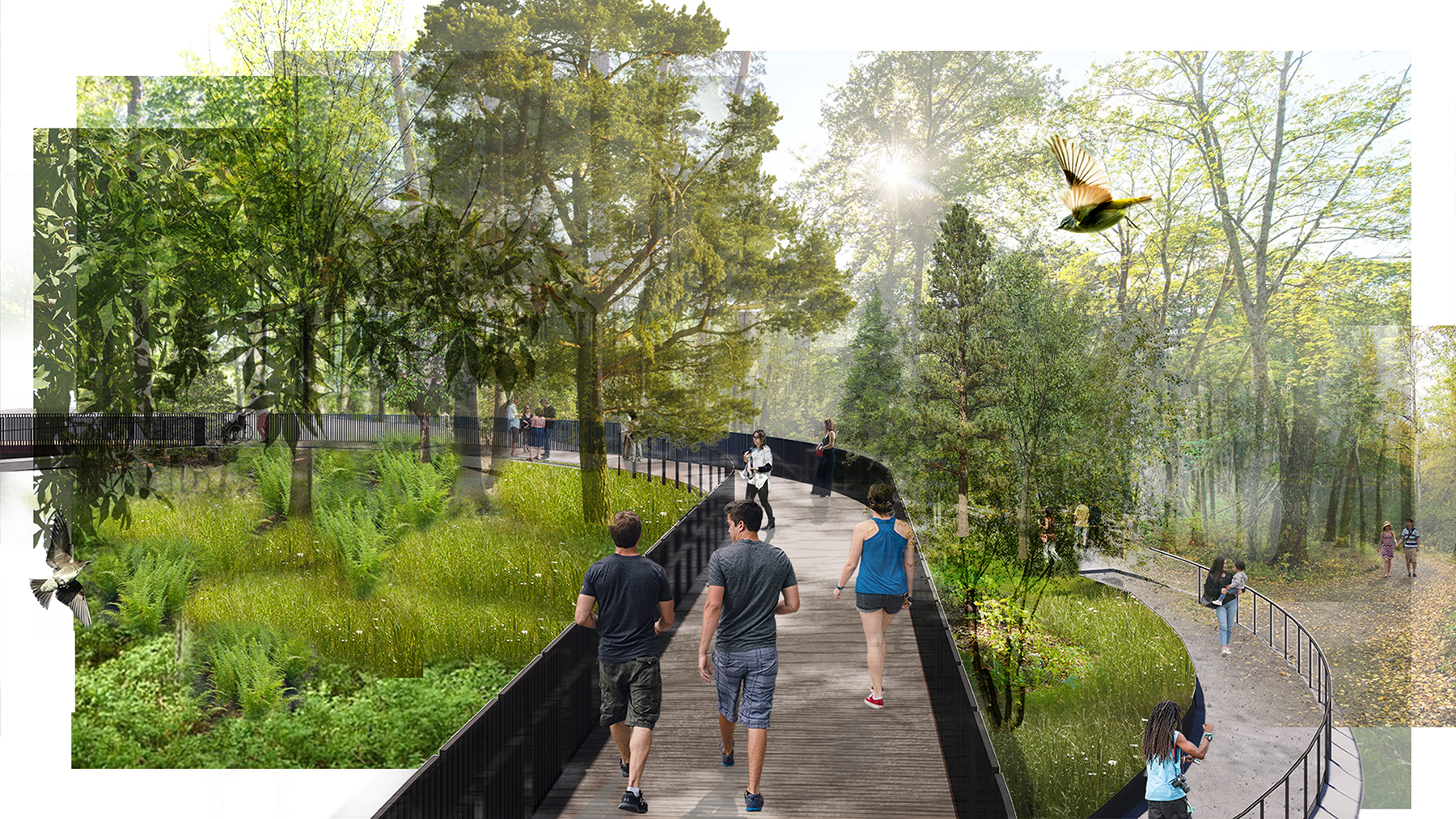
Because the zoo was originally designed with the monorail as its center, the walkway — which is scheduled to be completed in summer 2023 — will let guests again see attractions from the elevated perspective intended by the original designers. The sights include the zoo's Back 40, a forested piece of property that contains wetland that guests couldn’t otherwise see, says Zach Nugent, the communication and media relations specialist at the Minnesota Zoo, which is in Apple Valley, a Twin Cities suburb. Ideally, the setting — a familiar institution with a new walkway that any pair of shoes, wheelchair, or stroller can handle — will serve as a way for people to become more familiar with the natural world, Nugent says. “Being 32 ft off the ground provides an opportunity for anyone to get out into nature regardless of their past experiences.”
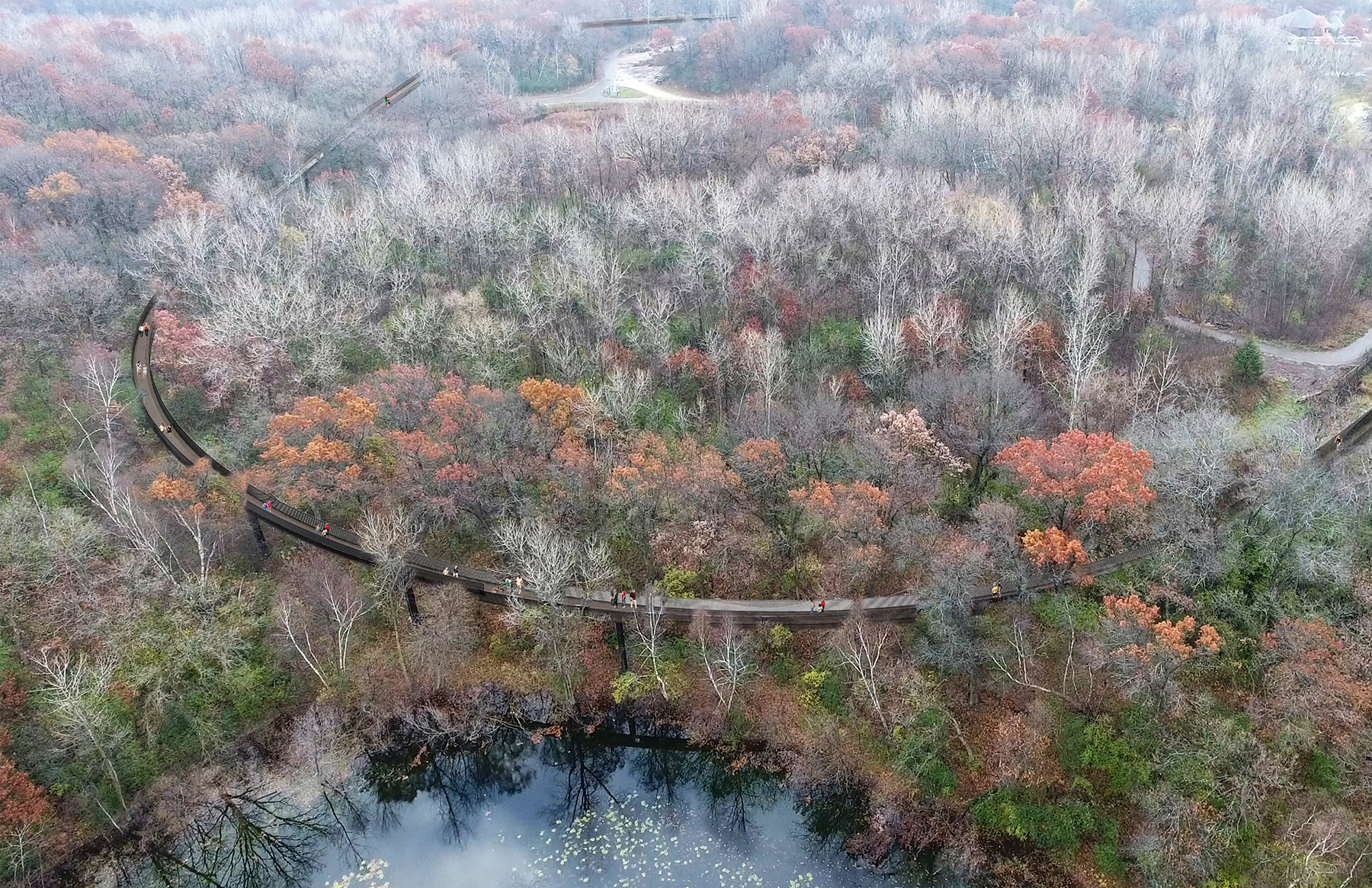
The monorail was a prominent part of the zoo for many years. The train car system debuted in 1979, one year after the zoo opened, in the midst of a train car trend sweeping through U.S. zoos. New York City’s Bronx Zoo launched its monorailin 1977, Zoo Miami opened its in 1982, and the Dallas Zoo monorail joined the lineup in 1990.
By 2013 however, the Minnesota Zoo monorail had lost its zip. Finding replacement pieces for the dated technology was becoming increasingly challenging while at the same time ridership was declining. The ride was forced to close. Ever since, the remaining support beams and track have sat above guests’ heads as a structure that obviously needed a new purpose. “We have this massive steel structure all throughout the zoo that’s frankly been a bit of an eyesore since decommissioning,” Nugent says. Three years after the arrival of a new zoo director, John Frawley, the institution had the idea to turn the old monorail into an elevated nature walkway.
Teaching an old rail new tricks
The zoo first approached Snow Kreilich Architects, a Minneapolis-based architecture studio, for a feasibility study. Once the zoo had begun fundraising and the state had allocated $11 million toward the project, Snow Kreilich pulled together a project bid with their partners, Meyer Borgman Johnson, a structural design and engineering firm, and Buro Happold, an engineering and consultancy firm.
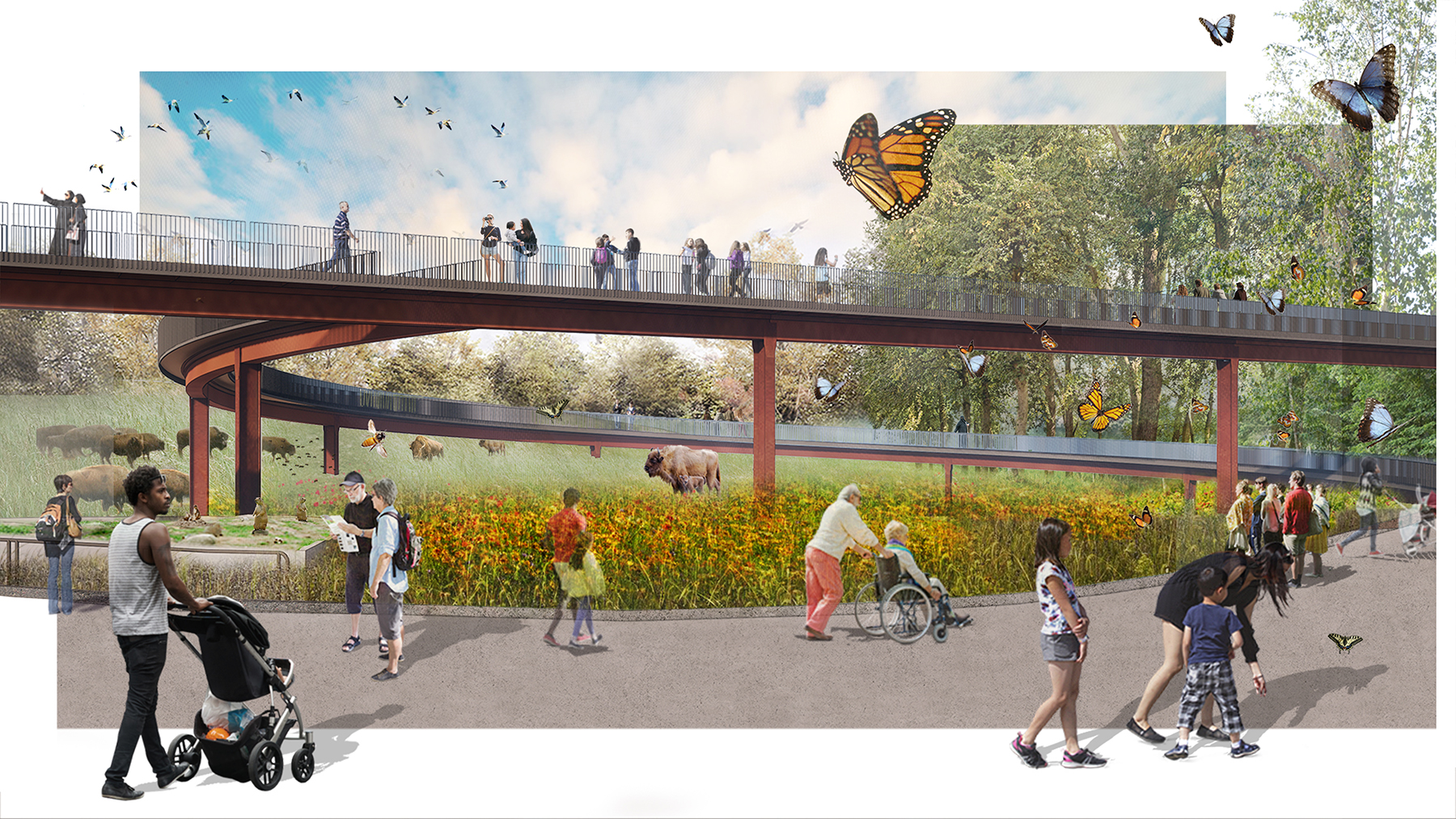
From the beginning, the team knew it would be operating within strict restraints. The task of turning a completely exposed, weathered steel structure into a 1.25 mi trail with several access points came with a $39 million budget. (For comparison, the High Line in New York City, the inspiration behind the project and another effort on which Buro Happold worked, cost $152.3 million for its first mile of walkway.)
The financial limitations in Minnesota meant the team had to avoid sinking money into bolstering the foundation to support ambitions that exceeded what the existing structure could handle. “We need to accept the existing monorail for what it is,” says Jon Wacker, P.E., with Meyer Borgman Johnson. “We can try to overcome existing capacity, but we’ll do nothing but steer ourselves into a world of hurt.”
Even then, turning a structure meant to carry train cars into one for crowds of walkers required planning. The train was a moving weight that stressed specific locations as it traveled along the route whereas people could pack onto a replacement trail and theoretically fill the whole structure at once. Even if body-to-body crowds never happen, the team had to evaluate how the weight and width of the pedestrian decking would add to the load atop the support beams. The more deck, the more weight from the material itself. The wider the platform, the more people who could be ambling along or standing still at any given time.
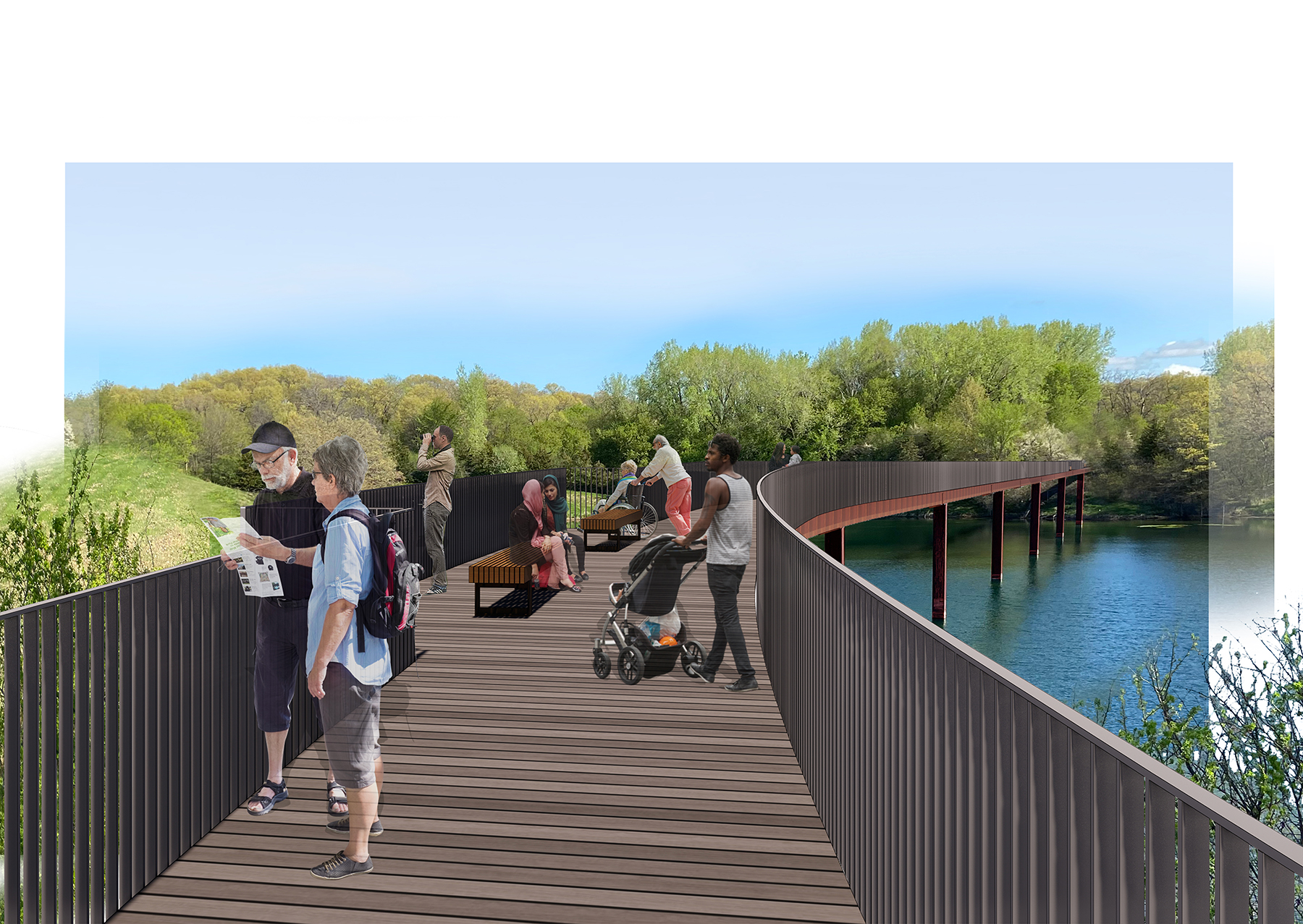
The compromise between demands — adequate space for people and the limits of what the support beams could handle — led to the team scratching plans for a 12 ft wide path and instead choosing one that was 8 ft wide in most places with several spots that then extend to 12 ft across. “It drove it for the better because it (now) has all these little moments that are special,” says Wolf Mangelsdorf, the global head of design technology and innovation at Buro Happold.
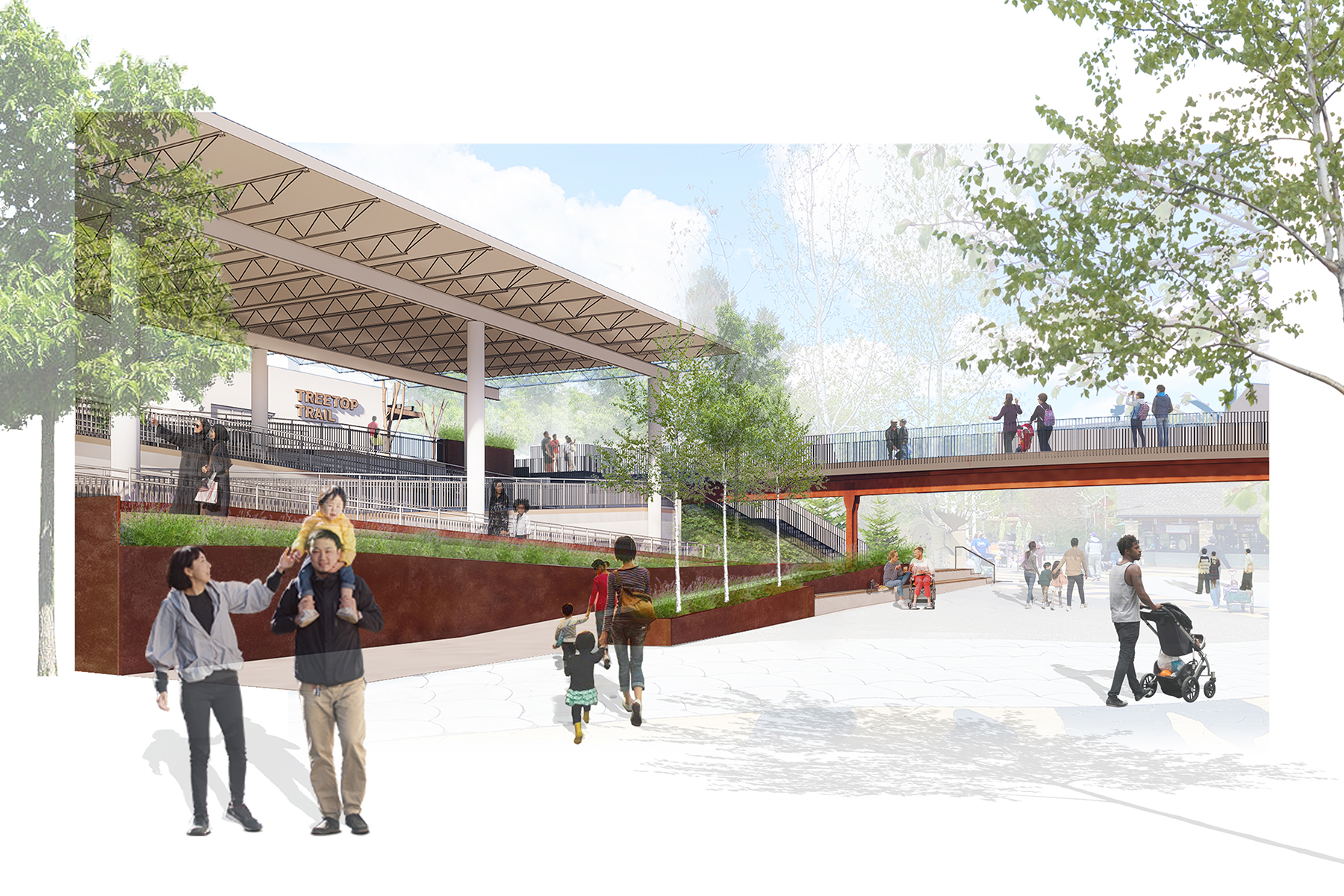
Multipurpose choices became a theme of the project and ultimately led to a better final product. “I believe that constraints are what make design sing. If you have no constraints, the design isn't going to be as strong and as sharp as it can be,” says Mary Springer, AIA, LEED AP, an associate principal with Snow Kreilich. “This project brought the constraints necessary to really hone our work.”
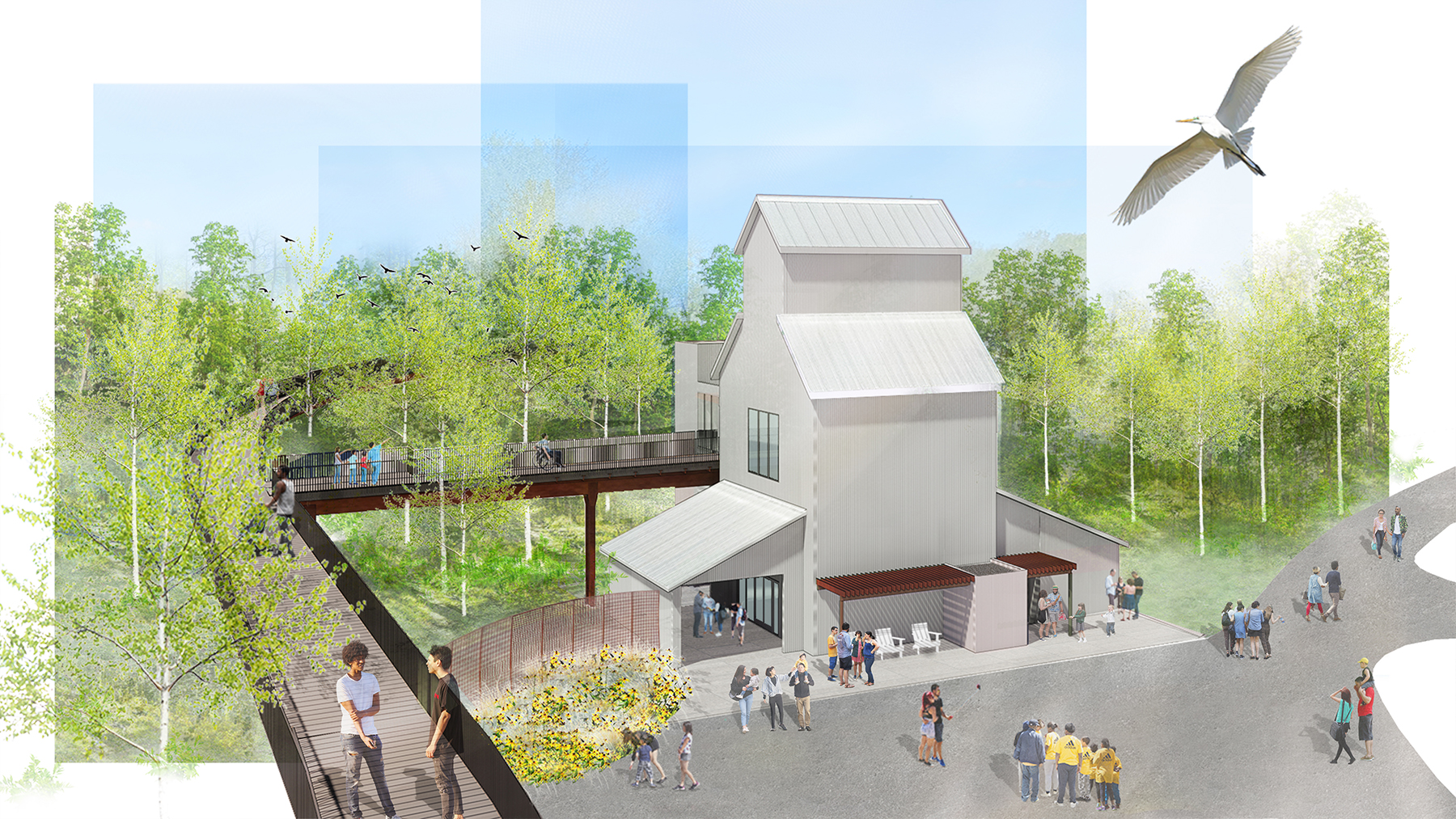
The 3 mi of guardrail, for example, would be highly visible, so this safety feature needed to also stay cost-effective and aesthetically pleasing. After several iterations, the team wound up with steel slats in two sizes. The smaller of the two saved costs by filling in the places that needed less support and creating what Wacker calls a “gorgeous texture” across the railing. And the outriggers installed to hold the walking deck onto the structure are triangular for aesthetics and practicality; a single piece of steel could provide two of the support pieces at once, cutting down on wasted materials.
Preparing a reintroduction
The ceremonial groundbreaking for the project has already taken place. The zoo also has been getting ready in other ways, preparing habitats for people to again view from above. Most recently, the zoo updated the Amur tiger enclosure, which the on-site exhibit designer shaped so that people walking by would see different structures, depending on if they’re on the ground or on the elevated trail.
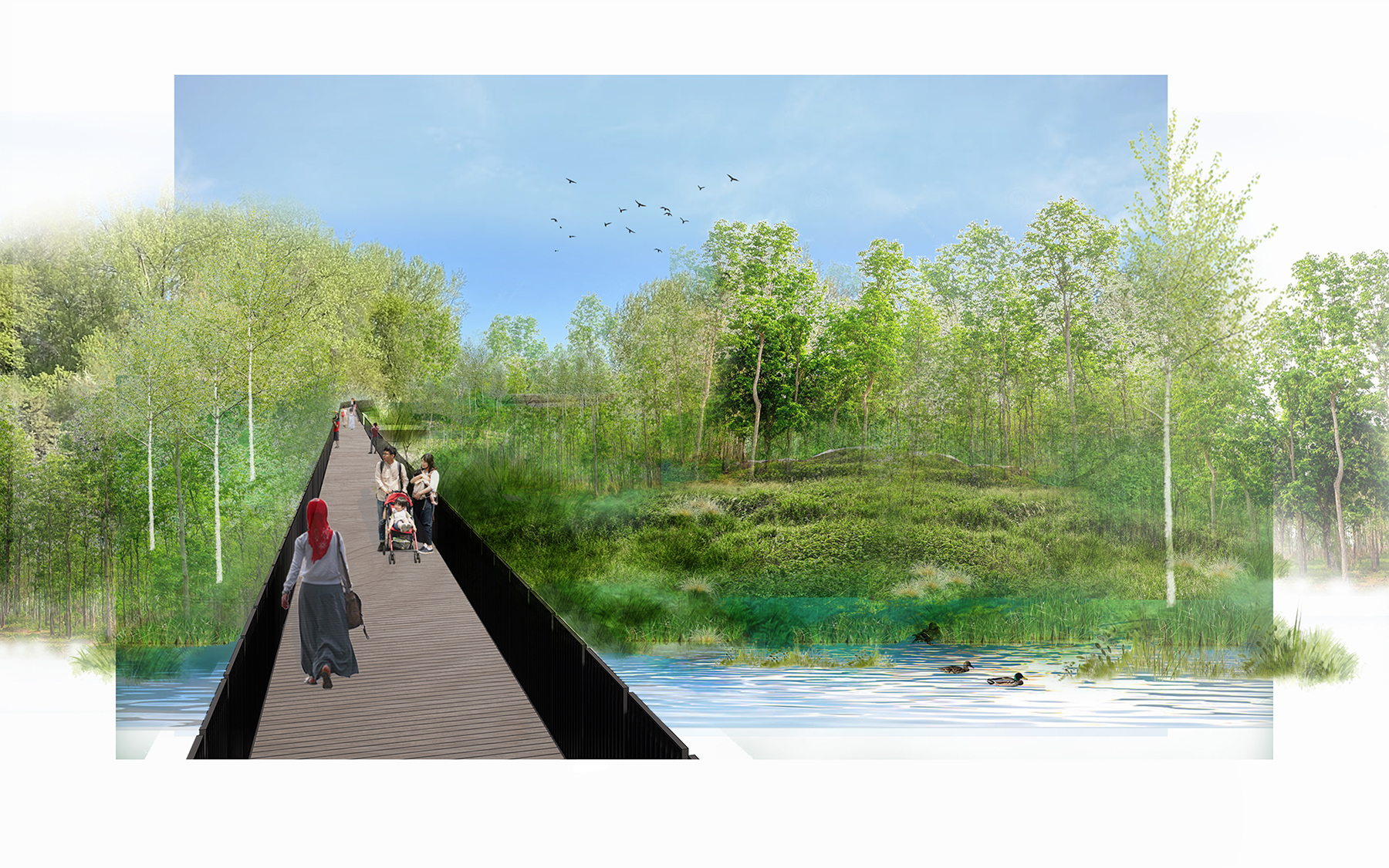
Also on the ground, the landscape design firm TEN x TEN is finding ways to work with the existing forestry of the Back 40. One entry ramp will wrap around a knoll filled with oak trees, so the designers had to shape the understory only as much as necessary to keep the entry point functional, Springer says.
The deck and its railings will be constructed from the existing steel structure itself — the team created a modular design that can be assembled without the need to place installation equipment inside animal habitats. Once open for visitors next summer, the zoo plans for access to be available to anyone entering the park, Nugent says, and will likely trigger some nostalgia. “The vantage I have had before from the monorail as a kid is now almost completely new again,” says Wacker. “And that's going to be very interesting to see, especially how multigenerational groups relate to that up on the trail.”



